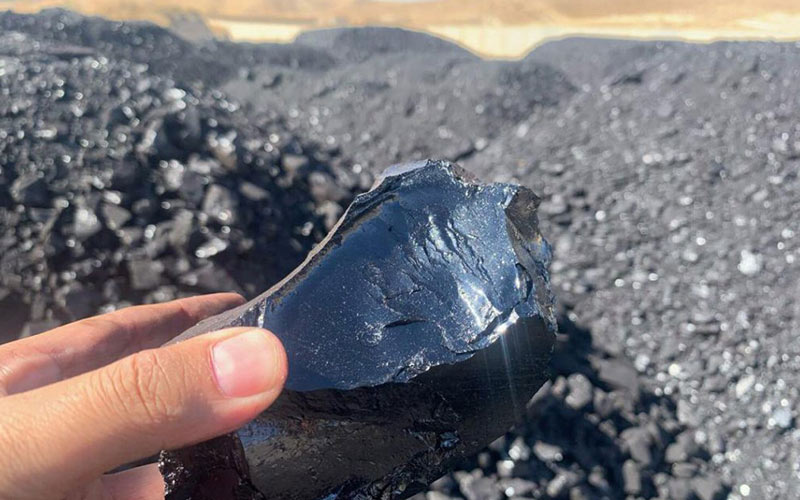
What is Gilsonite
Gilsonite, also known as uintaite, is a naturally occurring solid hydrocarbon mineral. It’s similar to asphalt or bitumen, but it’s often harder and more brittle. It’s typically found in the Uinta Basin in northeastern Utah, United States, although it can also be found in other parts of the world.
Gilsonite is often used in various industrial applications due to its unique properties. It’s commonly utilized in the manufacturing of asphalt and road construction, as a binder or additive to improve the properties of asphalt pavement. It’s also used in the production of paints, varnishes, and coatings due to its high melting point and resistance to water and chemicals. Additionally, it has applications in drilling fluids for oil and gas drilling, as well as in foundry sands and inks.
Stay tuned with elikagilsonite to learn more about this
History of Gilsonite
Gilsonite has a rich history that dates back centuries. Here’s a brief overview:
- Indigenous Use: Before European settlers arrived in North America, indigenous peoples were already using Gilsonite for various purposes. Native American tribes in the Uinta Basin region used it for waterproofing, as a sealant for canoes, and for medicinal purposes.
- Discovery by Samuel H. Gilson: The modern history of Gilsonite began in the late 19th century when Samuel H. Gilson, an American prospector, discovered the substance while searching for coal deposits in the Uinta Basin of Utah in 1888. He initially mistook it for coal but soon realized its unique properties.
- Commercialization: Gilson recognized the commercial potential of the substance and began mining and marketing it under the name “Gilsonite.” Its unique properties, including its high melting point, hardness, and resistance to water and chemicals, made it valuable for various industrial applications.
- Growth of Industry: In the early 20th century, the Gilsonite industry expanded rapidly as demand grew for its use in road construction, paints, varnishes, and other products. Mining operations expanded in Utah, and Gilsonite became an important part of the state’s economy.
- Legal Issues and Consolidation: The early history of the Gilsonite industry was marked by legal disputes over mining claims and ownership rights. Eventually, larger companies consolidated control over mining operations in the region.
- Continued Use and Research: Despite fluctuations in demand and technological advancements in alternative materials, Gilsonite has remained a valuable resource. Ongoing research has explored new applications for Gilsonite, particularly in areas such as asphalt modification, where its unique properties offer advantages over other materials.
Overall, the history of Gilsonite is one of discovery, commercialization, and ongoing innovation, with its legacy continuing to shape industries today.
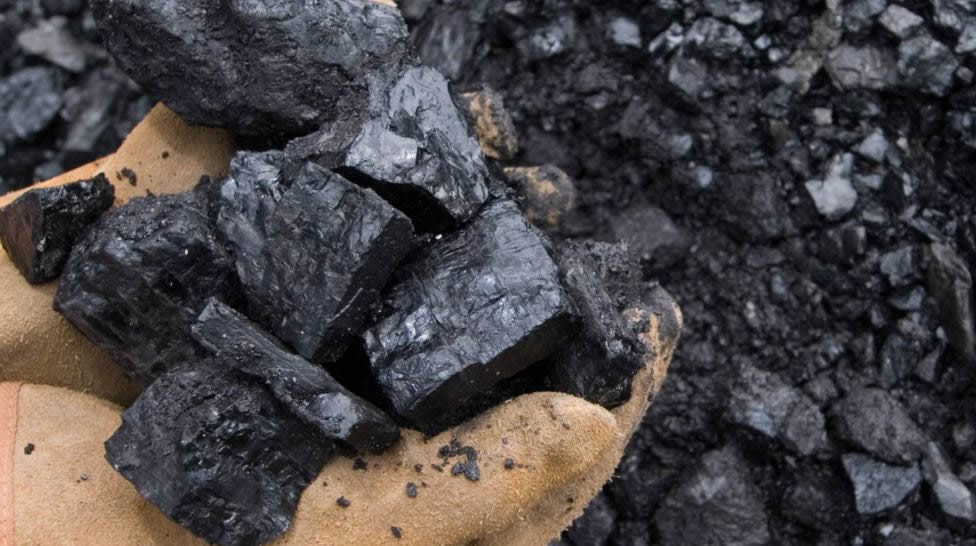
Gilsonite applications in various industries
Gilsonite, with its unique properties, finds applications in several industries. Here are some of its key uses:
- Road Construction and Asphalt Modification: One of the primary applications of Gilsonite is in road construction. It’s used as a binder or additive in asphalt mixes to enhance their properties. Gilsonite-modified asphalt (GMA) improves resistance to rutting, cracking, and stripping, leading to more durable and longer-lasting road surfaces.
- Paints, Coatings, and Sealants: Gilsonite is used in the manufacturing of paints, varnishes, and coatings due to its high melting point and resistance to water and chemicals. It provides durability, weather resistance, and gloss to these products. It’s also used as a sealant in various applications, including roofing, waterproofing, and pipe coatings.
- Foundry Sands and Mold Release Agents: In the foundry industry, Gilsonite is used as a binder in foundry sands to create molds for metal casting. It improves the strength and thermal stability of the molds. Additionally, it’s used as a mold release agent to facilitate the removal of castings from the molds.
- Inks and Printing: Gilsonite is utilized in the production of inks, particularly in the printing industry. It improves the viscosity, gloss, and drying properties of inks, making them suitable for various printing applications, including packaging, publications, and labels.
- Drilling Fluids in Oil and Gas Exploration: Gilsonite is used in drilling fluids for oil and gas drilling operations. It acts as a viscosifier, providing stability to the drilling fluid and preventing wellbore collapse. It also helps in sealing porous formations and controlling fluid loss.
- Adhesives and Binders: Gilsonite is employed as an adhesive and binder in various applications, including in the manufacturing of rubber compounds, composite materials, and construction adhesives. Its high melting point and adhesive properties make it suitable for bonding different materials together.
- Carbon Black Modification: Gilsonite is sometimes used in the modification of carbon black, a common filler material used in rubber products. It enhances the dispersion of carbon black in rubber compounds, improving the physical properties of the final products.
Overall, Gilsonite’s versatility and unique properties make it a valuable material in a wide range of industries, contributing to the durability, performance, and quality of various products and applications.
Gilsonite is unsurprisingly superior
Gilsonite does indeed possess several qualities that make it highly advantageous for various applications, which contribute to its reputation for superiority in certain contexts. Its unique combination of properties, including high melting point, hardness, water and chemical resistance, and adhesive characteristics, sets it apart from other materials and makes it particularly well-suited for specific industrial uses.
In road construction, for instance, Gilsonite-modified asphalt offers enhanced durability and resistance to rutting and cracking compared to traditional asphalt mixes. This superior performance can lead to longer-lasting road surfaces, reducing the need for frequent maintenance and repair.
Similarly, in the foundry industry, Gilsonite’s use as a binder in foundry sands improves the strength and thermal stability of molds, resulting in higher-quality castings and more efficient production processes.
Its versatility extends to other sectors as well, such as paints and coatings, where Gilsonite’s resistance to weathering and chemicals enhances the longevity and performance of finished products.
Overall, Gilsonite’s superiority lies in its ability to address specific challenges and requirements across multiple industries, offering unique advantages that contribute to the quality, durability, and efficiency of various applications.
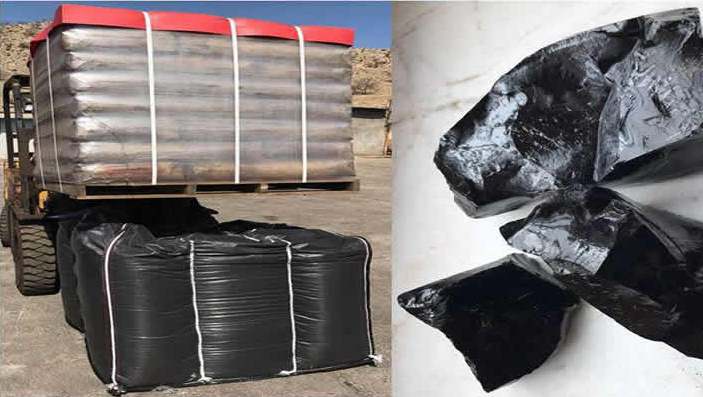
where is gilsonite found
Gilsonite is primarily found in the Uinta Basin region of northeastern Utah, United States. This area is one of the main sources of commercial Gilsonite production in the world. However, it can also be found in smaller quantities in other locations globally, including parts of Colorado, New Mexico, and Nevada in the United States, as well as in countries such as Iran, Iraq, and Russia.
The quality and quantity of Gilsonite deposits can vary from one location to another, with the Uinta Basin being known for its high-quality reserves. The geological conditions in these regions, such as the presence of oil shale deposits and sedimentary rock formations, contribute to the formation and accumulation of Gilsonite.
Pure Gilsonite
Pure Gilsonite, also known as uintaite or asphaltum, is a naturally occurring solid hydrocarbon found in various parts of the world, with significant deposits located in the Uinta Basin in Utah, USA. This unique substance is characterized by its high carbon content, typically ranging from 85% to 92%, making it one of the purest forms of natural bitumen. Its distinct properties stem from its geological formation, which involves the gradual transformation of organic matter over millions of years.
One of the remarkable features of pure Gilsonite is its versatility. It finds applications across diverse industries, including but not limited to the manufacturing of asphalt and road construction. Its addition to asphalt mixes enhances pavement performance by improving durability, flexibility, and resistance to moisture and aging. Moreover, it serves as a crucial component in the production of coatings, adhesives, and sealants due to its excellent binding and waterproofing properties.
Furthermore, pure Gilsonite is valued for its use in various specialty applications, such as inks, paints, and drilling fluids in the oil and gas industry. Its unique chemical composition and physical characteristics make it an ideal additive for enhancing the performance of these products. With its abundance of carbon and other organic compounds, Gilsonite continues to be a sought-after natural resource, driving innovation and advancements in numerous industrial sectors.
is gilsonite radioactive
No, Gilsonite is not radioactive. It is a naturally occurring solid hydrocarbon mineral primarily composed of carbon and hydrogen, with smaller amounts of oxygen, nitrogen, and sulfur. It does not contain any radioactive elements or isotopes.
Gilsonite is formed through the natural degradation of organic matter, such as ancient plant material, over millions of years. Its properties are similar to those of asphalt or bitumen, but it is often harder and more brittle. While it may be found in regions where there are other naturally occurring radioactive materials, Gilsonite itself does not exhibit any radioactive properties.
Gilsonite Price
The price of Gilsonite can vary based on several factors, including its quality, grade, purity, and market demand. Additionally, geopolitical factors, supply chain disruptions, and fluctuations in the oil and gas industry can influence its price.
As of my last update, I don’t have real-time pricing information for Gilsonite. However, you can typically find current prices by contacting Gilsonite suppliers or checking commodity price websites. It’s also worth noting that Gilsonite is often traded under different brand names or grades, so prices may vary depending on the specific product and its intended use.
buy gilsonite
If you’re interested in purchasing Gilsonite, you can typically find suppliers and distributors through various channels. Here are some steps you can take:
- Online Search: Use search engines to look for Gilsonite suppliers or distributors. Many companies have websites where you can find information about their products and contact details.
- Trade Directories: Explore trade directories or industry-specific directories that list companies involved in the extraction, processing, and distribution of Gilsonite.
- Industry Events: Attend trade shows, conferences, or industry events related to asphalt, road construction, or other sectors where Gilsonite is used. These events often feature exhibitors and suppliers showcasing their products.
- Contact Manufacturers: Reach out to manufacturers of Gilsonite-based products, such as asphalt companies or paint manufacturers, and inquire about their sources of Gilsonite.
- Consult Local Industry Associations: Industry associations related to asphalt, road construction, or other sectors where Gilsonite is utilized may have information or recommendations on where to purchase it.
When contacting suppliers, be sure to inquire about product specifications, pricing, minimum order quantities, and delivery options to ensure they meet your requirements.
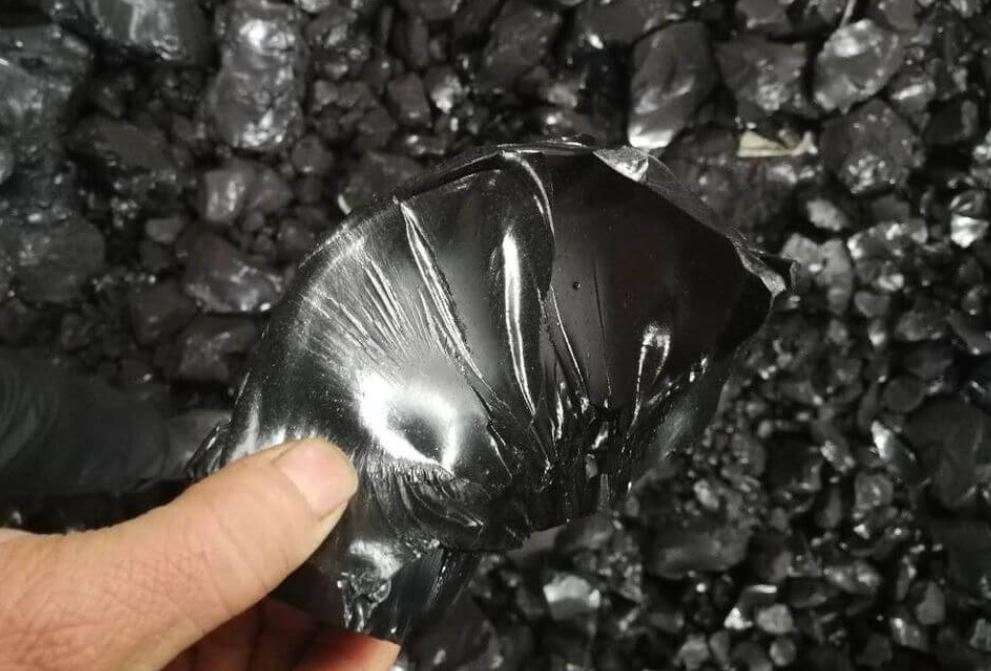
gilsonite for sale
I can’t facilitate purchases directly, but there are several ways to find Gilsonite for sale:
- Online Suppliers: Many companies that specialize in industrial minerals, including Gilsonite, have online platforms where you can purchase directly. Search for suppliers using keywords like “Gilsonite for sale” or “Gilsonite suppliers.”
- Industrial Supply Stores: Some industrial supply stores may carry Gilsonite or be able to order it for you. Check with stores that cater to construction, road maintenance, or similar industries.
- Trade Platforms: Online marketplaces and trade platforms often have listings for Gilsonite. Look on platforms like Alibaba, TradeKey, or Global Sources.
- Networking: Reach out to contacts in industries where Gilsonite is commonly used, such as asphalt production, road construction, or foundry operations. They may be able to recommend suppliers or connect you with potential sellers.
- Industry Events: Attend trade shows, conferences, or industry events related to construction, mining, or industrial minerals. These events often feature exhibitors who may have Gilsonite available for sale.
When purchasing Gilsonite, be sure to verify the quality, purity, and source of the product, and consider factors such as shipping costs and delivery times. Additionally, inquire about any regulations or restrictions that may apply to the transportation or use of Gilsonite in your region.
gilsonite uses
Gilsonite has a wide range of uses across various industries due to its unique properties. Some of the primary applications of Gilsonite include:
- Road Construction: Gilsonite is commonly used as a binder or additive in asphalt mixes to improve their performance. It helps enhance the durability, stability, and resistance of asphalt pavements to rutting, cracking, and stripping, resulting in longer-lasting roads.
- Foundry Industry: In the foundry sector, Gilsonite is utilized as a binder in foundry sands to create molds for metal casting. It improves the strength and thermal stability of the molds, leading to higher-quality castings and more efficient production processes.
- Paints, Coatings, and Sealants: Gilsonite is used in the manufacturing of paints, varnishes, and coatings due to its high melting point, durability, and resistance to water and chemicals. It provides gloss, weather resistance, and protection to surfaces, making it suitable for various applications, including roofing, waterproofing, and pipe coatings.
- Inks and Printing: Gilsonite is employed in the production of inks, particularly in the printing industry. It improves the viscosity, gloss, and drying properties of inks, making them suitable for various printing applications, including packaging, publications, and labels.
- Drilling Fluids in Oil and Gas Exploration: Gilsonite is used in drilling fluids for oil and gas drilling operations. It acts as a viscosifier, providing stability to the drilling fluid and preventing wellbore collapse. It also helps in sealing porous formations and controlling fluid loss.
- Adhesives and Binders: Gilsonite serves as an adhesive and binder in various applications, including rubber compounds, composite materials, and construction adhesives. Its high melting point and adhesive properties make it suitable for bonding different materials together.
- Carbon Black Modification: Gilsonite is sometimes used in modifying carbon black, a common filler material used in rubber products. It enhances the dispersion of carbon black in rubber compounds, improving the physical properties of the final products.
These are just some of the many applications of Gilsonite across industries, highlighting its versatility and importance in various manufacturing and construction processes.
gilsonite sealer
Gilsonite sealer, also known as Gilsonite asphalt sealer or asphalt sealer with Gilsonite, is a type of sealant used in asphalt pavement maintenance and repair. It’s made by blending Gilsonite, a naturally occurring hydrocarbon mineral, with other materials such as asphalt emulsion, polymers, and additives.
Here are some key features and benefits of Gilsonite sealer:
- Durability: Gilsonite sealer enhances the durability and longevity of asphalt surfaces by providing a protective coating that helps resist damage from water, UV rays, chemicals, and traffic.
- Flexibility: It maintains flexibility over time, allowing it to adapt to the natural movement and expansion of the asphalt surface without cracking or peeling.
- Quick Drying: Gilsonite sealer typically dries quickly, minimizing downtime and allowing for faster reopening of the sealed area to traffic.
- Enhanced Appearance: It improves the appearance of asphalt surfaces by restoring their dark, rich color and providing a smooth, uniform finish.
- Easy Application: Gilsonite sealer is easy to apply using a variety of methods, including spray application, squeegee, or brush, making it suitable for both professionals and DIY enthusiasts.
- Cost-Effectiveness: By extending the life of asphalt surfaces and reducing the need for frequent repairs and maintenance, Gilsonite sealer offers a cost-effective solution for preserving and protecting asphalt pavement.
Overall, Gilsonite sealer is a popular choice for asphalt maintenance projects due to its durability, flexibility, quick drying time, and ability to enhance the appearance of asphalt surfaces. It’s commonly used for sealing driveways, parking lots, roads, and other asphalt surfaces to protect them from deterioration and prolong their service life.
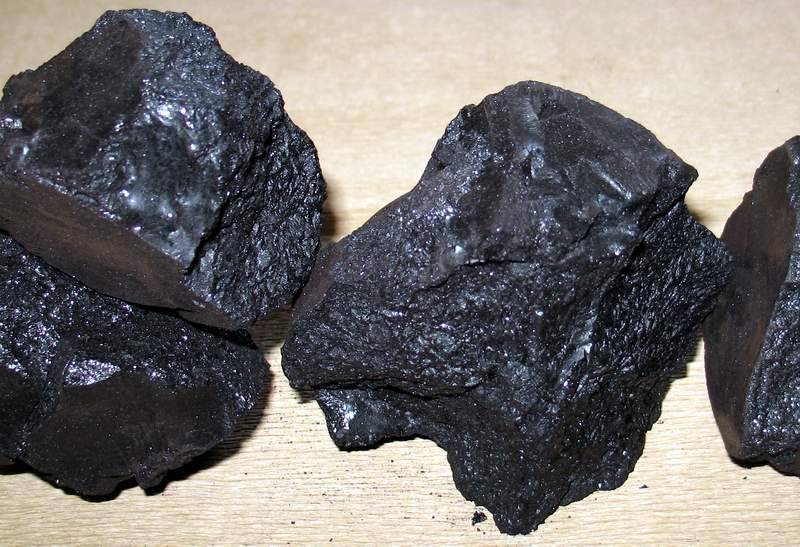
gilsonite properties
Gilsonite possesses several unique properties that make it valuable for various industrial applications. Here are some key properties of Gilsonite:
- Hardness: Gilsonite is known for its hardness, which makes it resistant to abrasion and wear. This property is particularly advantageous in applications where durability and resistance to mechanical stress are important, such as road construction and foundry molds.
- High Melting Point: Gilsonite has a high melting point, typically ranging from 180°C to 240°C (356°F to 464°F), depending on the grade and purity. This property allows it to withstand high temperatures without softening or deforming, making it suitable for use in high-temperature applications such as asphalt paving and foundry operations.
- Water Resistance: Gilsonite exhibits excellent water resistance, which makes it suitable for outdoor applications and environments where exposure to moisture is common. It helps protect surfaces from water damage and degradation, making it valuable in products such as waterproofing coatings and sealants.
- Chemical Resistance: Gilsonite is resistant to many chemicals, including acids, alkalis, and solvents. This property makes it suitable for use in applications where exposure to harsh chemicals is expected, such as in paints, coatings, and adhesives.
- Adhesive Properties: Gilsonite has natural adhesive properties, allowing it to bond well with other materials. This property makes it valuable as a binder or adhesive in various applications, including asphalt paving, rubber compounding, and composite materials.
- Low Volatility: Gilsonite has low volatility, meaning it does not easily evaporate or release volatile compounds at normal temperatures. This property contributes to its stability and long-term performance in applications such as paints, coatings, and sealants.
- Black Color: Gilsonite is naturally black in color, which gives it a distinctive appearance. This property makes it suitable for use in products where a dark color is desired, such as asphalt paving, inks, and printing.
Overall, Gilsonite’s unique combination of properties, including hardness, high melting point, water and chemical resistance, adhesive properties, low volatility, and black color, make it a valuable material in a wide range of industrial applications.
gilsonite stain
Gilsonite stain refers to the dark discoloration or marking that can occur when Gilsonite comes into contact with surfaces, particularly porous materials such as concrete, wood, or fabric. This staining can be challenging to remove due to Gilsonite’s adhesive and penetrating properties.
Here are some tips for removing Gilsonite stains:
- Immediate Action: If Gilsonite spills onto a surface, try to remove it as quickly as possible to prevent it from setting and penetrating deeper into the material.
- Scraping: For solid or semi-solid Gilsonite stains, gently scrape off as much of the material as possible using a blunt-edged tool such as a plastic scraper or putty knife. Be careful not to scratch or damage the surface.
- Absorbent Material: For liquid Gilsonite stains, blot up excess liquid with absorbent materials such as paper towels, cloth rags, or sawdust. Press firmly to absorb as much of the stain as possible.
- Solvent or Cleaner: Apply a solvent or cleaning solution specifically formulated to break down and dissolve oil-based stains. Mineral spirits, acetone, or a commercial degreaser may be effective for removing Gilsonite stains from surfaces. Always test the solvent in an inconspicuous area first to ensure it does not cause damage or discoloration.
- Scrubbing: Use a scrub brush or abrasive pad to gently scrub the stained area with the solvent or cleaner. Work in a circular motion to lift the stain from the surface. Rinse the area with clean water and repeat as necessary.
- Pressure Washing: For outdoor surfaces such as concrete driveways or sidewalks, a pressure washer can be effective in removing Gilsonite stains. Use a high-pressure nozzle and hot water to blast away the stain. Be cautious not to use too much pressure, which could damage the surface.
- Professional Cleaning: In some cases, stubborn Gilsonite stains may require professional cleaning or restoration services. Professional cleaners have access to specialized equipment and techniques for effectively removing tough stains from a variety of surfaces.
Always follow safety precautions and manufacturer’s instructions when using solvents or cleaning products, and test any cleaning method in a small, inconspicuous area before applying it to the entire stained surface.
How is gilsonite formed?
Gilsonite, also known as uintaite, is a naturally occurring solid hydrocarbon mineral formed through the geological process of petroleum maturation and migration. Its formation involves several key steps:
- Organic Matter Deposition: The initial stage of Gilsonite formation begins with the accumulation of organic matter, such as plant debris, algae, and other organic material, in ancient lake or marine environments. These organic sediments accumulate over millions of years in sedimentary basins.
- Burial and Compaction: Over time, layers of sediment accumulate on top of the organic matter, burying it deeper within the Earth’s crust. The weight of the overlying sediments causes compaction and pressure, which gradually transforms the organic material into a type of sedimentary rock known as kerogen.
- Thermal Maturation: As the sedimentary basin undergoes further burial, it experiences increasing temperatures and pressures due to the heat generated by the Earth’s internal processes and the burial of additional sediments. This thermal maturation process, also known as diagenesis, causes chemical reactions within the kerogen, leading to the transformation of organic matter into hydrocarbons, including oil and natural gas.
- Migration and Accumulation: As oil and natural gas form, they begin to migrate through porous rock layers, moving from areas of high pressure to areas of lower pressure within the sedimentary basin. Some of these hydrocarbons may migrate into reservoir rocks where they accumulate in large quantities, forming oil and gas reservoirs.
- Cracking and Enrichment: In some cases, during the thermal maturation process, certain hydrocarbons may undergo further chemical reactions, leading to the formation of specialized hydrocarbon deposits such as Gilsonite. These deposits typically occur in specific geological settings where the right combination of temperature, pressure, and organic material is present. The exact mechanisms of Gilsonite formation are still not fully understood, but it is believed to involve the alteration and enrichment of specific organic precursors under high-temperature conditions.
Overall, Gilsonite formation is a complex process that occurs over millions of years within sedimentary basins, resulting in the development of unique hydrocarbon deposits with distinctive properties and characteristics.

What is another name for gilsonite?
Another name for Gilsonite is “uintaite.” Both terms refer to the same naturally occurring solid hydrocarbon mineral. The name “Gilsonite” is derived from Samuel H. Gilson, the prospector who discovered the mineral in the Uinta Basin of northeastern Utah, United States, in 1888. The name “uintaite” is derived from the Uinta Basin, where the mineral is primarily mined and found. Both terms are widely used interchangeably to refer to this unique mineral substance.
Where is gilsonite found?
Gilsonite is primarily found in the Uinta Basin region of northeastern Utah, United States. This area is one of the main sources of commercial Gilsonite production in the world. However, it can also be found in smaller quantities in other locations globally, including parts of Colorado, New Mexico, and Nevada in the United States, as well as in countries such as Iran, Iraq, and Russia.
The quality and quantity of Gilsonite deposits can vary from one location to another, with the Uinta Basin being known for its high-quality reserves. The geological conditions in these regions, such as the presence of oil shale deposits and sedimentary rock formations, contribute to the formation and accumulation of Gilsonite.
gilsonite suppliers
Finding Gilsonite suppliers can be done through various channels. Here are some options:
- Online Directories: Websites like Alibaba, Thomasnet, or Global Sources often list suppliers of industrial minerals, including Gilsonite. You can search for Gilsonite suppliers on these platforms and contact them directly.
- Industry Associations: Associations related to asphalt, road construction, or industrial minerals may have directories or member lists that include Gilsonite suppliers. Examples include the Asphalt Institute or the National Stone, Sand & Gravel Association.
- Trade Shows and Exhibitions: Attending trade shows and exhibitions related to asphalt, construction, or mining can provide opportunities to meet Gilsonite suppliers in person. These events often feature exhibitors showcasing their products and services.
- Online Search: Simply searching for “Gilsonite suppliers” or “Gilsonite manufacturers” using a search engine can yield results. You may find companies that specialize in industrial minerals or asphalt-related products.
- Networking: Reach out to contacts in industries where Gilsonite is used, such as road construction companies, asphalt producers, or mining companies. They may be able to recommend suppliers or provide contact information for their own suppliers.
When contacting suppliers, be sure to inquire about their product specifications, pricing, minimum order quantities, and shipping options. It’s also important to verify the quality and purity of the Gilsonite they offer, as well as any certifications or standards they adhere to.
gilsonite driveway sealer
Gilsonite driveway sealer is a type of asphalt sealer that contains Gilsonite, a naturally occurring solid hydrocarbon mineral. This sealer is specifically designed for sealing and protecting asphalt driveways from the elements, including water, UV rays, chemicals, and general wear and tear.
Here are some key features and benefits of Gilsonite driveway sealer:
- Durability: Gilsonite driveway sealer enhances the durability and longevity of asphalt surfaces by forming a protective coating that helps resist damage from traffic, weathering, and other environmental factors.
- Flexibility: It maintains flexibility over time, allowing it to adjust to the natural movement and expansion of the asphalt surface without cracking or peeling.
- Quick Drying: Gilsonite driveway sealer typically dries quickly, minimizing downtime and allowing for faster reopening of the sealed driveway to foot and vehicle traffic.
- Enhanced Appearance: It improves the appearance of asphalt driveways by restoring their dark, rich color and providing a smooth, uniform finish.
- Easy Application: Gilsonite driveway sealer is easy to apply using a variety of methods, including brush, roller, or spray application, making it suitable for both professionals and DIY enthusiasts.
- Protection: It helps protect asphalt driveways from water penetration, UV damage, oil spills, and other common sources of deterioration, prolonging the life of the driveway and reducing the need for costly repairs or replacement.
When applying Gilsonite driveway sealer, it’s important to follow the manufacturer’s instructions carefully and ensure proper surface preparation for optimal adhesion and performance. This may include cleaning the driveway thoroughly, repairing any cracks or damage, and allowing the surface to dry completely before applying the sealer.
gilsonite hs code
The Harmonized System (HS) code for Gilsonite is 27149090. This code falls under Chapter 27 of the HS, which covers mineral fuels, mineral oils, and products of their distillation; bituminous substances; mineral waxes. The specific HS code 27149090 is for “Other Bituminous Mixtures Based on Natural Asphalt or Natural Bitumen (for example, Shale Tar, Oil Sands, and Tar Sands).”
It’s worth noting that HS codes are used for customs and tariff purposes, facilitating international trade by standardizing the classification of goods. When importing or exporting Gilsonite, this HS code may be used to identify and classify the product for customs clearance and tariff assessment.
gilsonite resin shale stop
Gilsonite is a type of naturally occurring solid hydrocarbon classified as a bitumen. It’s often used in various applications such as asphalt and in the production of paints, inks, and drilling muds. “Shale stop” might refer to its application in drilling operations, particularly in shale formations.
In drilling, shale formations can present challenges due to their tendency to collapse or flow into the wellbore. To address this issue, drilling fluids containing additives like Gilsonite are used. The Gilsonite resin helps to stabilize the shale formations, preventing them from collapsing and thus “stopping” the shale from interfering with the drilling process. This stabilization is crucial for maintaining the integrity of the wellbore and ensuring efficient drilling operations.
gilsonite mining
Gilsonite mining involves the extraction of Gilsonite, a naturally occurring solid hydrocarbon, from deposits found primarily in the Uinta Basin in northeastern Utah and northwestern Colorado, United States. The mining process typically involves the following steps:
- Exploration: Geological surveys and exploration activities are conducted to identify areas with Gilsonite deposits. This involves analyzing the composition of rock formations and identifying potential locations for mining.
- Site Preparation: Once a suitable deposit is identified, the site is prepared for mining operations. This may involve clearing vegetation, constructing access roads, and setting up infrastructure such as mining equipment and facilities.
- Extraction: The extraction of Gilsonite involves various methods depending on the specific geological characteristics of the deposit. Common methods include open-pit mining and underground mining. In open-pit mining, the Gilsonite is extracted from the surface using heavy machinery such as excavators and trucks. In underground mining, tunnels are dug to access the Gilsonite deposits, and the ore is extracted using specialized mining equipment.
- Processing: After extraction, the Gilsonite ore undergoes processing to remove impurities and prepare it for commercial use. This may involve crushing, grinding, and sorting the ore to achieve the desired quality and particle size.
- Transportation and Distribution: Once processed, the Gilsonite is transported to distribution centers or directly to customers. Transportation methods may include trucks, railroads, or pipelines, depending on the location of the mining operation and the destination of the product.
- Environmental Reclamation: After mining operations are completed, environmental reclamation efforts are undertaken to restore the land to its original condition as much as possible. This may involve backfilling excavated areas, planting native vegetation, and implementing erosion control measures to mitigate any environmental impact caused by the mining activities.
Gilsonite mining plays a significant role in various industries, including asphalt production, ink manufacturing, and drilling fluid additives. However, like any mining activity, it requires careful planning and management to minimize its environmental impact and ensure sustainable resource extraction.
